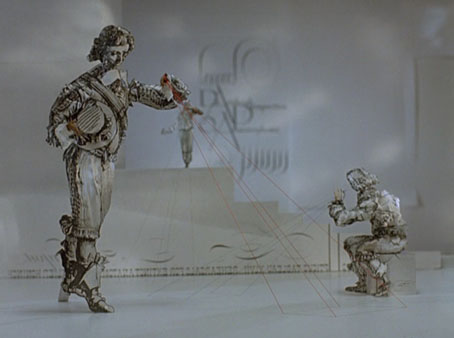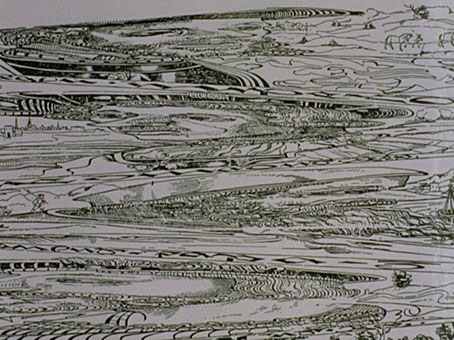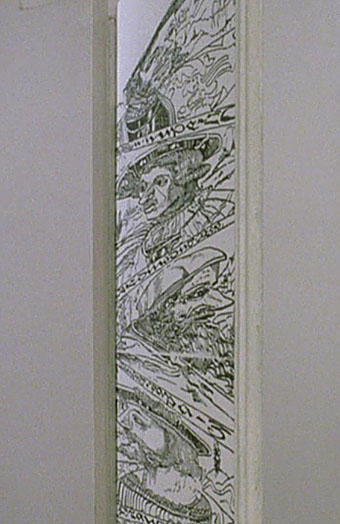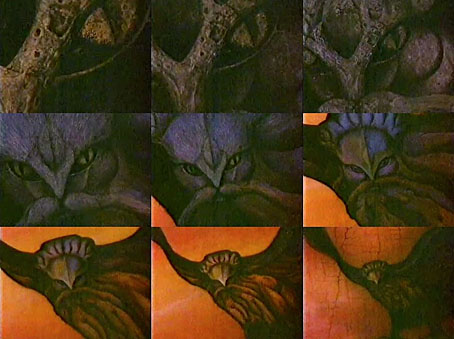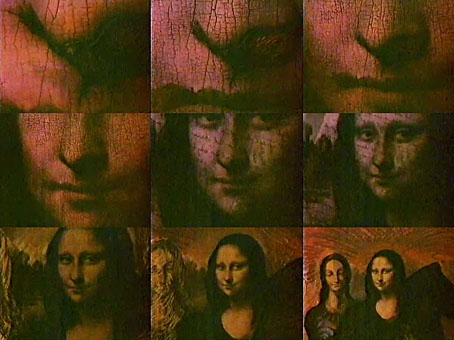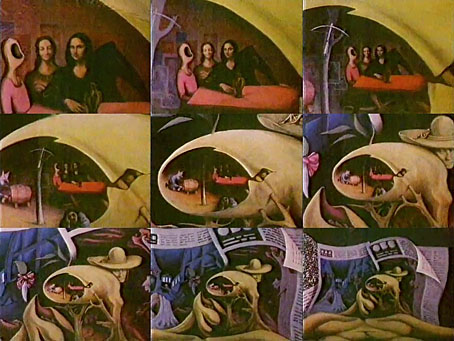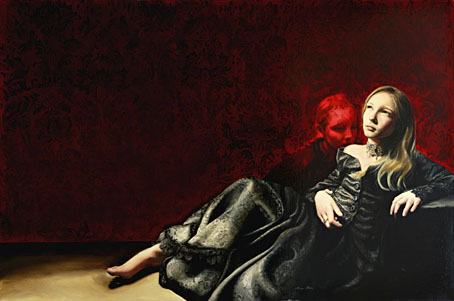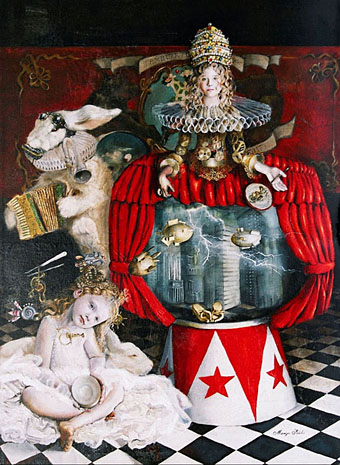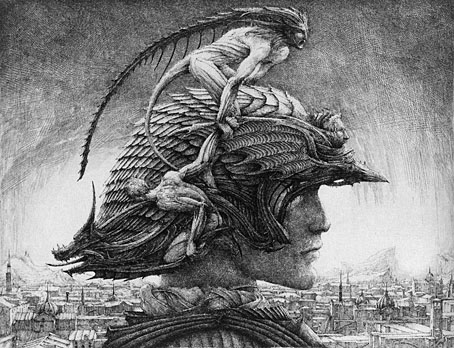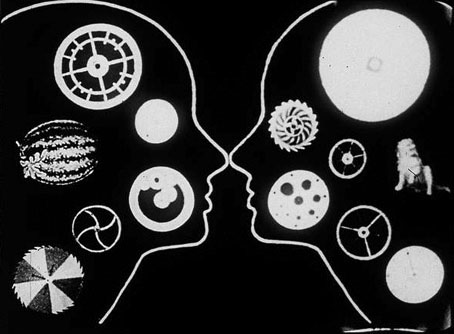Some anamorphosis for All Fool’s Day. De Artificiali Perspectiva, or Anamorphosis (1991) is a short film by the Brothers Quay which can be seen in two parts at YouTube. (And I’d urge anyone interested to avail themselves of the essential double-disc collection of the Quays’ early work which includes this film.) There are plenty of sites devoted to anamorphosis such as this one but films tend to explain the effect better than still pictures by showing the stages of transformation to or from pictorial coherence. The stills below, for example, work better in motion than they do here. The Quay’s first feature, Institute Benjamenta (1995), also features some anamorphosis with a mural on the walls of a passage in the film’s strange school for servants.
Also at YouTube there’s a short video demonstration of mirror anamorphosis, a variation where the distorted picture corrects itself when viewed with a mirrored tube. Musician Rick Wakeman used this effect for an album he released in 1976, No Earthly Connection, a work whose cover art is more impressive than the music it embellishes. The album came with a thin sheet of mirrored plastic which could be folded to create a viewing device.
Previously on { feuilleton }
• The Ambassadors in detail
• False perspective
• Trompe l’oeil

